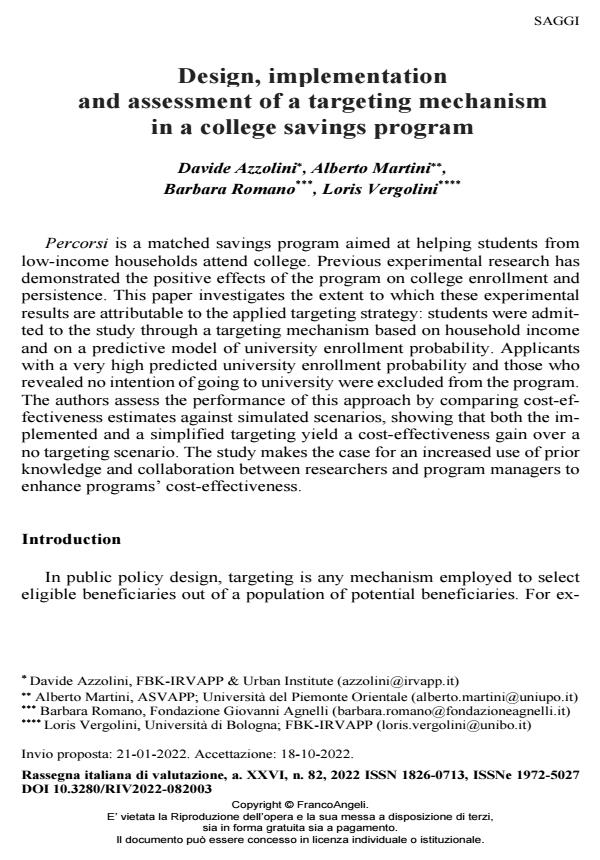Design, implementation and assessment of a targeting mechanism in a college savings program
Titolo Rivista RIV Rassegna Italiana di Valutazione
Autori/Curatori Davide Azzolini, Alberto Martini, Barbara Romano, Loris Vergolini
Anno di pubblicazione 2023 Fascicolo 2022/82
Lingua Inglese Numero pagine 21 P. 33-53 Dimensione file 460 KB
DOI 10.3280/RIV2022-082003
Il DOI è il codice a barre della proprietà intellettuale: per saperne di più
clicca qui
Qui sotto puoi vedere in anteprima la prima pagina di questo articolo.
Se questo articolo ti interessa, lo puoi acquistare (e scaricare in formato pdf) seguendo le facili indicazioni per acquistare il download credit. Acquista Download Credits per scaricare questo Articolo in formato PDF

FrancoAngeli è membro della Publishers International Linking Association, Inc (PILA)associazione indipendente e non profit per facilitare (attraverso i servizi tecnologici implementati da CrossRef.org) l’accesso degli studiosi ai contenuti digitali nelle pubblicazioni professionali e scientifiche
Percorsi is a matched savings program aimed at helping students from low-income households attend college. Previous experimental re-search has demonstrated the positive effects of the program on college enrollment and persistence. This paper investigates the extent to which these experimental results are attributable to the applied targeting strategy: students were admitted to the study through a targeting mechanism based on household income and on a predictive model of university enrollment probability. Applicants with a very high predicted universi-ty enrollment probability and those who revealed no intention of going to university were excluded from the program. The authors assess the performance of this approach by comparing cost-effectiveness esti-mates against simulated scenarios, showing that both the implemented and a simplified targeting yield a cost-effectiveness gain over a no tar-geting scenario. The study makes the case for an increased use of prior knowledge and collaboration between researchers and program manag-ers to enhance programs’ cost-effectiveness.
Davide Azzolini, Alberto Martini, Barbara Romano, Loris Vergolini, Design, implementation and assessment of a targeting mechanism in a college savings program in "RIV Rassegna Italiana di Valutazione" 82/2022, pp 33-53, DOI: 10.3280/RIV2022-082003